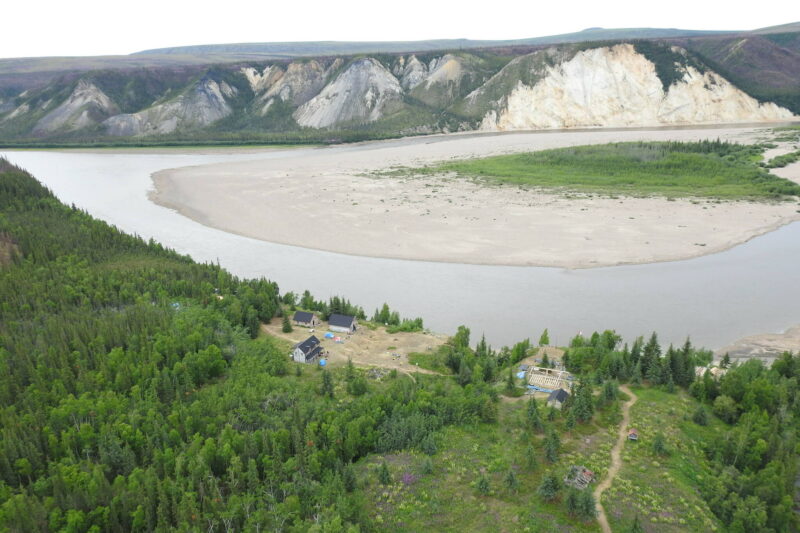One of the earliest trading posts in the Yukon has received heritage designation.
Gindèhchik, also known as Rampart House, is located on the Porcupine River. It long served as a gathering place for Vuntut Gwitchin citizens who hunted and trapped in the area. In the late 1800s, the Hudson’s Bay Company began using it as a trading post.
Rebecca Jensen, manager of Yukon Historic Sites, says Gindèhchik is notable for being an early point of contact between settlers and the First Nation.
“(Here), families interacted with fur traders, explorers, missionaries, government officials, who then really had profound impacts on the livelihood, the wellbeing and the lives of the Gwitchin people and impacts to their culture,” Jensen says.
READ MORE: Fastest freighter in the Yukon shares riverboat history from new home in Carcross
She says the site is also interesting for its location on the border between Canada and the U.S. It offers an early example of how the relationship between the two countries developed, and how that border impacted the Vuntut Gwitchin, who had always moved freely through the area before artificial borders were imposed.
“After Alaska was purchased, there was a real interest to try and firmly delineate the boundary between the U.S. and Canada, and especially with trying to figure out where the Hudson Bay posts were,” she says.
That led to the creation of one of the first more permanent settler villages, with the site expanding to include a church, rectory and homes for residents such as Archie Linklater, Amos Njootli and others.
READ MORE: Yukon living cultural and historical site keeps spiritual essence intact
Heritage features at the site include a number of standing and collapsed buildings, as well as the outlines of locations where campsites once were.
Jensen says certain buildings have needed more intense restoration work than others, including the log-by-log dismantling and rebuilding of some. Others are being left as relics. All, she says, are stabilized and cared for, so even if they’re not prioritized for full restoration, prevention of further deterioration is key.
Jensen says it’s hard to say how many people visit the site annually because it’s only staffed four weeks out of each year, but people on river trips frequently visit the site.
The July 27 heritage designation included people coming by boat and helicopter from both Old Crow, Fort Yukon and Whitehorse, and a signing ceremony for the updated management plan of both Gindèhchik and the nearby Zheh Gwatsàl (LaPierre House). Located on the Bell River, Zheh Gwatsàl already has heritage designation. Both sites are co-owned by the Vuntut Gwitchin First Nation and the Yukon Government.
READ MORE: Successful ‘treasure hunt’ recovers 1930s-era cameras abandoned on Yukon glacier
Plan your adventures throughout the West Coast at westcoasttraveller.com and follow us on Facebook and Instagram @thewestcoasttraveller. And for the top West Coast Travel stories of the week delivered right to your inbox, sign up for our weekly Armchair Traveller newsletter!











 Waterfalls Loop Trail on Oregon’s McKenzie River is a summertime treat for hikers
Waterfalls Loop Trail on Oregon’s McKenzie River is a summertime treat for hikers